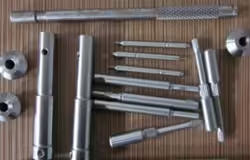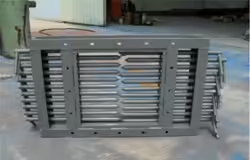
Billet Steel vs Forged: 6 Major Benefits Explained
Table of Contents
Introduction
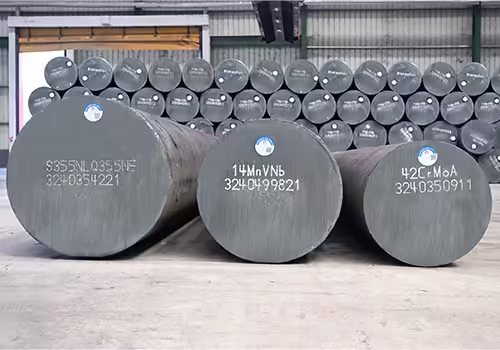
When it comes to metal manufacturing and engineering applications, choosing the right material and processing method is crucial. Two of the most commonly compared methods are billet steel and forged steel. Understanding the differences and advantages of billet steel vs forged products can significantly impact the performance, durability, and cost-effectiveness of the final product.
This blog will explore the six major benefits of both billet steel and forged components, providing insights that help you make informed decisions whether you are in automotive, aerospace, industrial machinery, or construction fields.
1. Understanding the Production Process in Billet Steel vs Forged
The foundation of the differences between billet steel vs forged lies primarily in their distinct manufacturing processes, which have significant impacts on their final properties and applications. Billet steel is produced by first casting molten metal into large cylindrical or square shapes known as billets. These billets are then cut into smaller, manageable sizes for further machining and processing. This process results in a relatively uniform chemical composition throughout the billet because the metal solidifies evenly during casting.
In contrast, forging is a mechanical process where solid metal is shaped by applying compressive forces using hammers, presses, or dies. During forging, the metal is often heated to increase ductility, then plastically deformed, which realigns and refines the internal grain structure of the material. This grain refinement is critical, as it improves mechanical properties such as strength, toughness, and fatigue resistance by eliminating voids and defects commonly found in cast or billet materials.
Additionally, forging can be performed as open-die forging, closed-die forging, or upset forging, each with its unique applications and advantages. The forging process also imparts directional properties to the metal because the grains flow in the direction of the deformation, creating anisotropy that engineers often exploit to improve performance in critical load-bearing components.
Overall, the billet steel manufacturing process favors uniformity and ease of machining, while forged steel benefits from enhanced structural integrity and optimized grain flow. This fundamental difference is why the comparison between billet steel vs forged often centers around mechanical performance versus manufacturing flexibility.
2. Strength and Durability Benefits of Billet Steel vs Forged
Strength and durability are among the most critical factors in choosing between billet steel vs forged materials. Forged steel typically demonstrates superior mechanical properties because the forging process realigns the metal’s grain structure to follow the shape of the component. This grain alignment reduces internal weaknesses such as porosity or micro-cracks that can cause premature failure. As a result, forged components generally exhibit enhanced toughness, higher yield strength, and improved fatigue resistance, making them ideal for applications requiring durability under cyclic or high-stress conditions.
Billet steel also offers excellent strength characteristics, particularly when it undergoes precise machining and post-processing heat treatments. Because billets are machined from solid blocks of steel, they allow for highly customized, intricate designs with tight dimensional tolerances. However, since billet steel retains the isotropic grain structure from casting without directional grain flow, its toughness and fatigue resistance can be somewhat lower than that of forged parts.
For example, in automotive and aerospace industries, forged parts such as crankshafts and connecting rods are preferred for their ability to withstand repeated high loads without cracking or deforming. Meanwhile, billet steel is often favored for complex tooling, aerospace structural components, and custom machinery parts where precision and design flexibility are paramount.
This difference in strength and durability between billet steel vs forged underscores the importance of selecting the appropriate manufacturing method based on the operational environment and mechanical demands of the component.
3. Cost Efficiency and Manufacturing Flexibility in Billet Steel vs Forged
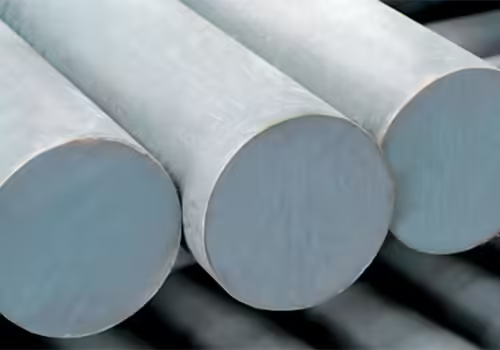
Cost efficiency and manufacturing flexibility play a significant role in deciding between billet steel vs forged components, especially in production planning and budgeting. Forging processes generally require specialized heavy machinery, such as hydraulic presses or forging hammers, and skilled labor to operate them. These factors contribute to higher initial capital expenditure and setup costs. However, once the tooling and dies are created, forging allows for high-volume production with relatively low per-unit costs due to faster cycle times and minimal material waste. Moreover, forged parts often require less machining since the forging process produces near-net shapes, which can reduce finishing costs.
On the other hand, billet steel machining involves cutting and shaping solid billets into the desired form. This subtractive manufacturing method typically generates more material waste compared to forging and requires longer machining times. Consequently, the cost per part for billet steel components can be higher, especially for larger production volumes. Nevertheless, billet steel machining offers superior flexibility, making it ideal for small production runs, prototypes, or highly customized parts where changes in design can be accommodated quickly without the need for expensive forging dies.
Furthermore, billet steel machining enables manufacturers to create intricate and complex geometries that might be difficult or impossible to achieve through forging. This flexibility is particularly valuable in industries like aerospace or custom tooling, where unique designs are often needed.
Ultimately, when comparing billet steel vs forged from a cost and flexibility standpoint, the decision often balances the production volume, required part complexity, and budget constraints. For mass production with standardized parts, forging is typically more cost-effective, while billet steel machining suits specialized or low-volume manufacturing needs.
Table: Comparison of Key Attributes Between Billet Steel vs Forged
| Attribute | Billet Steel | Forged Steel |
|---|---|---|
| Production Process | Machining from cast billets | Shaping by compressive forces |
| Grain Structure | Uniform but less directional | Aligned grain flow, improved strength |
| Mechanical Strength | High but varies with machining | Higher toughness and fatigue resistance |
| Dimensional Tolerance | Very tight and precise | Good, but may require finishing |
| Cost | Higher for small batches | Lower for large-scale production |
| Applications | Complex, custom parts | High-stress, load-bearing components |
4. Surface Finish and Precision: Billet Steel vs Forged
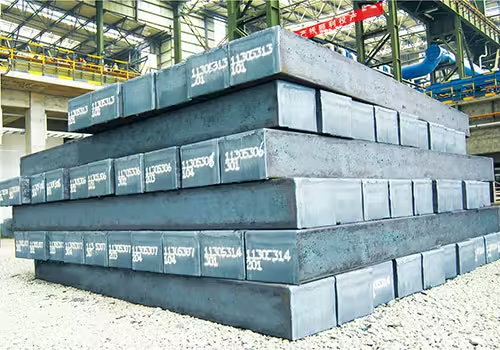
Another important benefit to consider when comparing billet steel vs forged is the achievable surface finish and dimensional precision of the final parts. Billet steel components are machined from solid metal blocks, which provides manufacturers with significant control over tolerances and surface quality. This machining process allows for extremely tight tolerances, often in the range of microns, and results in smooth, polished surfaces that meet the requirements of high-precision applications such as aerospace, medical devices, and high-performance tooling.
Because billet steel is a homogeneous material with consistent chemical composition, it responds well to advanced machining techniques, including CNC milling and grinding. This enables the production of complex shapes with excellent surface finish without the need for additional extensive finishing processes.
In contrast, forged parts typically start with a near-net shape produced by mechanical deformation. While forging imparts superior mechanical properties to the metal, the initial surface finish is usually rougher due to the nature of the forging dies and deformation process. Therefore, forged components often require secondary finishing processes such as machining, grinding, or polishing to achieve the final surface quality and tight dimensional tolerances.
However, the amount of finishing needed for forged parts is often less extensive compared to casting or raw billet machining because forging reduces internal defects and improves surface integrity. In applications where extreme precision and aesthetics are critical, billet steel machining may be preferred. But for parts primarily focused on strength and fatigue resistance, forged components with moderate finishing are often sufficient.
Thus, the choice between billet steel vs forged for surface finish and precision depends largely on the specific functional and cosmetic requirements of the component, balancing machining time, cost, and mechanical performance.
5. Reliability and Safety Considerations in Billet Steel vs Forged

Reliability and safety are crucial factors when evaluating billet steel vs forged for critical industrial applications. Forged steel parts generally offer higher reliability under demanding operational conditions due to their refined grain structure and increased toughness. The forging process compresses and realigns the metal grains, eliminating porosity, shrinkage cavities, and other internal defects that can act as initiation points for cracks or failure.
This superior structural integrity makes forged components highly favored in safety-critical sectors such as aerospace, automotive suspensions, heavy machinery, and pressure vessels. In these industries, the ability of forged parts to withstand dynamic loads, impact forces, and cyclic stresses reduces the risk of sudden failures that could compromise safety or lead to costly downtime.
Billet steel components can also achieve high reliability, particularly when combined with precision machining, heat treatment, and rigorous quality control. The uniformity of the billet material allows for predictable mechanical behavior, and any surface or subsurface defects can be minimized through careful machining and inspection processes.
However, billet steel may be somewhat less tolerant to extreme dynamic or shock loads compared to forged steel, as it lacks the directional grain flow and internal compression that strengthen forged parts. This means billet steel is better suited to applications where complex shapes and precise tolerances are needed but the mechanical loading is less severe or more static.
In summary, when considering reliability and safety in the billet steel vs forged debate, forged steel typically offers a performance advantage in harsh, high-stress environments, while billet steel provides flexibility and precision for components where shape and finish are prioritized without compromising acceptable safety margins.
Conclusion
The comparison of billet steel vs forged reveals that both have unique strengths suited to different applications. Forged steel shines in scenarios demanding exceptional toughness, fatigue resistance, and high-stress endurance. Billet steel excels when intricate shapes, precise tolerances, and complex machining are required.
Ultimately, the best choice depends on your specific project goals, production volume, and budget considerations. Understanding these six major benefits of billet steel vs forged will help you make an informed decision that enhances product performance and longevity.
FAQ
What industries commonly use billet steel vs forged parts?
Billet steel is often used in aerospace, tooling, and custom automotive parts, while forged steel is favored in heavy machinery, aerospace structural components, and automotive load-bearing parts.
Is forged steel always stronger than billet steel?
Forged steel generally has better toughness and fatigue resistance due to grain alignment, but billet steel can achieve high strength depending on machining and heat treatment.
Can billet steel parts be heat treated?
Yes, billet steel parts can be heat treated to enhance mechanical properties, making them suitable for many demanding applications.
How does cost compare between billet steel vs forged?
Billet steel machining can be more costly for small runs, but forging requires higher initial investment and is more cost-efficient for mass production.
Which offers better precision: billet steel or forged?
Billet steel parts typically achieve tighter tolerances and better surface finishes due to the machining process.





